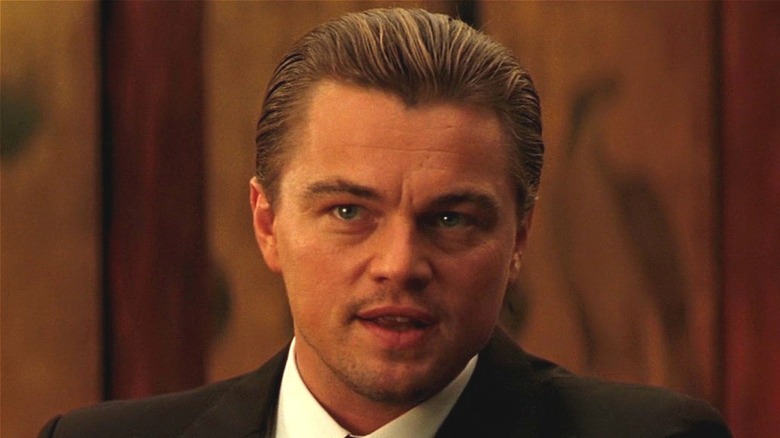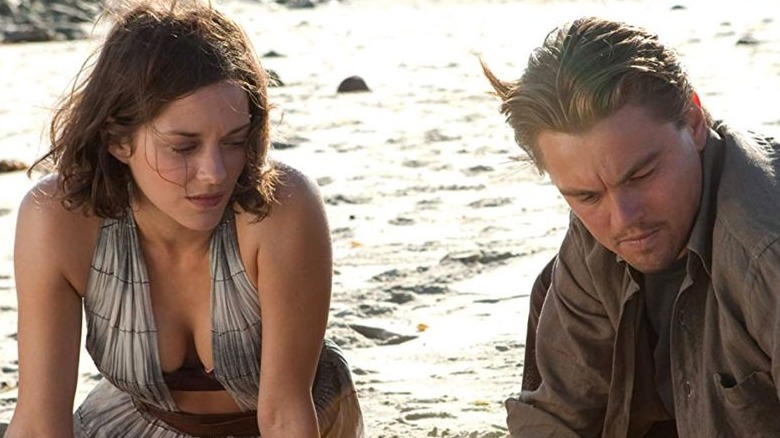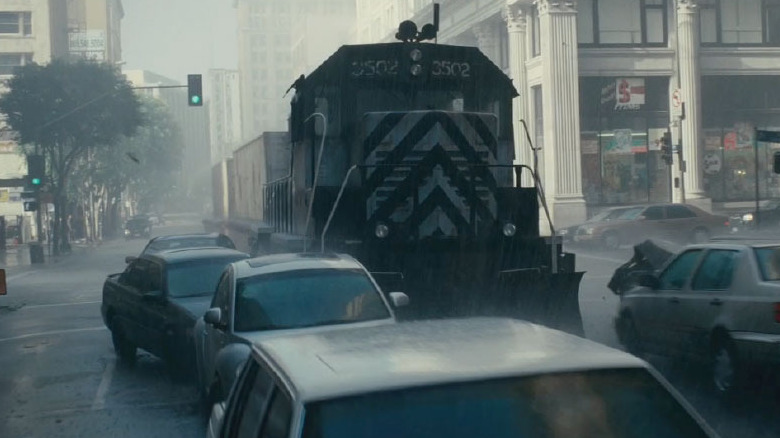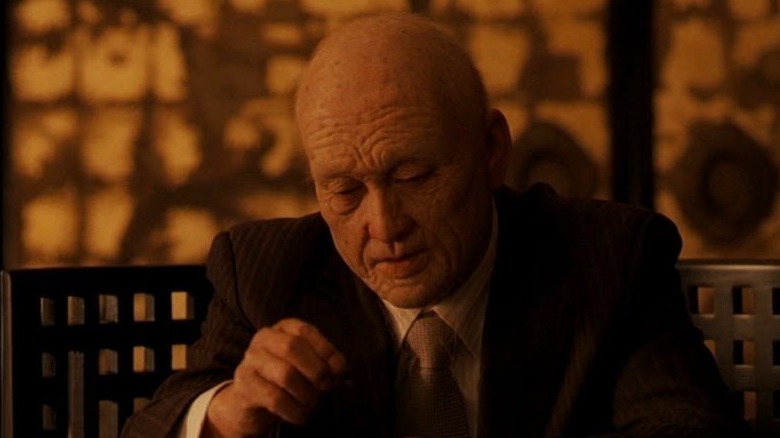The Big Clue Everyone Missed Early In Inception
Long before we were using leftover red string to figure out Christopher Nolan's time-heist epic, "Tenet," we spent the original bundle trying to do the same for his absolute dream of a blockbuster, "Inception." Nolan's 2010 mind-bending movie led by Leonardo DiCaprio is the director's third most successful film of all time after "The Dark Knight" and "The Dark Knight Rises," grossing $728 million worldwide (via The Numbers). It is still a film that has fans scratching their head over a decade later.
The twisty, layered film follows a specially-trained group of thieves hired to take information from people's subconscious by entering their dreams. "Inception" sees Dom Cobb (DiCaprio) lead his team to pull off the rarely-done task of inception: planting an idea inside their target's mind without being noticed.
Gripping audiences with its intricate storyline, the question fans have tried hard to answer for themselves ever since its release is one Nolan left wide open in the closing moments of the film: did Cobb make it back to reality or is he still stuck in the dream world? As it turns out, evidence from very early in the film (via Screen Rant) suggests what many have believed all along.
This one Inception theory is a wake-up call
Even after its bajillionth viewing, it's still hard to determine if Cobb's iconic totem — which is actually his late wife, Mal's (Marion Cotillard) totem — is about to fall over or keep on spinning as he finally walks off to play with his children. The focus, according to several theories, though, shouldn't be on the spinning top, but rather the hints and clues to suggest we've been in Cobb's head the whole time. If we adhere to the rules of Nolan's dream world, it could be argued that the heist has been Cobb's dream since the beginning.
As explained to the young student and maze-maker, Ariadne (Elliot Page), dreams don't actually have a beginning. Like the film itself, they simply start with no explanation as to how or why the dreamer got there. In the opening scene, Cobb wakes to see flashes of his children building sandcastles at the foot of a house on a cliff (more on that later). It's part of Cobb's dream, but did he ever actually wake up from it at any point in the film?
The numbers don't lie
Another critical detail for the subconsciously planted scheme involves numbers reappearing in their target's head. Through the ongoing levels of "Inception" that Cobb and his team send Fischer (Cillian Murphy) through, the numbers 528491 appear. It's the collection of numbers that will ultimately open the safe for the idea to be willingly planted in Fischer's head. The numbers appear on the table napkin at the bar Cobb meets his target, as well as hotel room numbers where he's taken to safety (528 and 491). These aren't the only digits floating around "Inception," though.
Besides Fischer's eventual safe number, 3502 also appears in various forms throughout "Inception." It's the number of the train that almost flattens them in Yusuf's rain-soaked level, and reversed on the taxi, as well. Most importantly, it also happens to be the hotel room number where Cobb's wife Mal committed suicide. If this is the origin of the specific set of numbers, why are they reappearing in Yusuf's dream? Unless this rain sequence is just another layer of Cobb's, and the whole thing is still inside his head and no one else's.
The castle on the hill
Besides being a popular Ed Sheeran song, the castle on the hill is another chin-scratching element that supports the case that this is all in Cobb's head. As mentioned, we meet our hero in the middle of the story (or the start) at the foot of an ornate home. From there, he's taken to meet an old man we eventually learn to be Saito (Ken Watanabe), who has been waiting for Cobb for some time. Initially, we're led to believe that the home was born from the business titan's imagination, as it's the same design as when he and Cobb first met. But yet again, evidence suggests that the grand building is a design of Cobb's.
At the end of the film, when the dream team leader is seemingly brought back to reality, Cobb gets home to finally see his children. He spins the top totem and walks out to see them making sandcastles, or as they rather strangely put it, "building a house on a cliff." Is it a mere coincidence that this location matches the one Saito had for his dream home or is it a design choice that Cobb has had from the beginning? Is Saito's heavily guarded pad just another piece to a grand scheme thought up by our homesick hero? Like everything else, we can never be sure. Maybe we should sleep on it.



